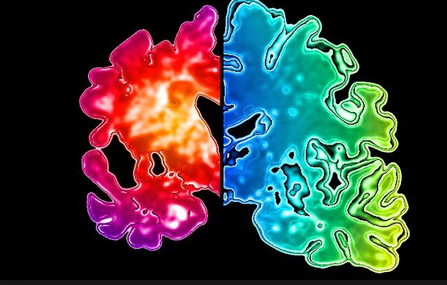A team from MIT examined transcription across tens of thousands of individual cells in both Alzheimer’s and healthy brains and found APOE strongly upregulated in the microglia in AD brains and perturbation in myelination-related processes in multiple cell types including oligodendrocytes.
HHV-6A infection of oligodendrocyte precursor cells disrupts their function, in turn affecting myelination (Campbell 2017). Two HHV-6A proteins, the U24 (Sang 2017) and U94 (Campbell 2017) proteins, have been identified as possible myelination disruptors.
The group collected prefrontal cortex tissue post-mortem from the brains of 24 individuals with Alzheimer’s pathology and 24 without AD or other pathologies. From these tissues, the RNA profiles of 80,660 cells were obtained. Excitatory neurons, inhibitory neurons, astrocytes, oligodendrocytes, microglia, oligodendrocyte progenitor cells, endothelial cells, and pericytes were identified by clustering cells according to their distinct patterns of transcription. By doing so, the investigators were able to determine associations between AD pathology and qualitative and quantitative differences between these cell types. In contrast with bulk RNA-sequencing, single-cell RNA sequencing can differentiate between transcriptional changes across cell types, and can account for differentially expressed genes (DEGs) that are upregulated in one cell type but downregulated in another.
Over a thousand genes across all cell types were differentially regulated between AD and no-pathology tissues. The top DEGs were involved in related processes, including myelination, axonal outgrowth, and regeneration. The majority of DEGs in excitatory and inhibitory neurons showed downregulation while most DEGs in oligodendrocytes, astrocytes, and microglia were upregulated. The usefulness of a single-cell sequencing approach was highlighted in finding that 95% of DEGs were perturbed only in neurons or only in one glial cell type. Data also revealed upregulation of APOE in microglia and downregulation of APOE in astrocytes.
By dividing the brains of those with AD-pathology into two subgroups- early and late pathology- the group found that large-scale transcriptional changes occur before individuals develop severe pathological features. Common upregulated genes shared across cell types in late-stage pathology were involved in protein folding and were associated with autophagy, apoptosis, and generalized stress response.
The team also determined how differences in gene expression related to specific pathological traits, such as plaque count, tangle density, and global cognition. Gene sets with similar expression patterns and phenotypic correlations were grouped together, and different gene groups were found to correlate with AD pathology in the different cell types. Gene groups associated with similar traits were involved in common functional pathways, including immune/inflammatory, myelination, oligodendrocyte differentiation, and amyloid-beta clearance pathways. AD risk factors (e.g. APOE, TREM2, and the MHC class II genes HLA-DRB1 and HLA-DRB5), previously identified in genome-wide association studies, were also found to correlate with some of these gene groups in neurons and microglia.
Certain subtypes of the cells studied were overrepresented in AD tissues while others were more prevalent in brains without pathology, and it was proposed that differences in their prevalence may be responsible for the variation in transcriptional patterns, or AD pathology may alter their abundance. The authors also described associations between cell subtypes and genes involved in inflammation, demyelination, protein folding and stability, neuronal and necrotic death, and T-cell activation and immunity, which pointed to cell-type specific responses to global cellular stress.
Interestingly, transcriptional responses were different between sexes in several types of cells. Moreover, female cells were overrepresented in the AD pathology group, which was not due to disproportional cell contributions of particular individuals nor to more severe AD pathology in females. The data instead pointed to a sex-specific differential transcriptional response to AD pathology, whereby women exhibit more extensive changes at the transcriptional level but match men in the degree of pathophysiological and cognitive decline.
Further studies aimed at determining how HHV-6A affects transcription of the many DEGs identified in this report, in different CNS-resident cells, could prove helpful in determining if and how the virus might participate in dysregulation of several cellular pathways involved in AD that might contribute to the disease.
A 2016 mRNA-sequencing study found 249 differentially expressed genes in the human astrocyte cell HA1800 during HHV-6A infection, 7 of which were associated with two or more CNS diseases (Shao 2016). Another mRNA profiling study found that HHV-6A infection of cultured human adult astrocytes resulted in slight changes in expression of cytokines, chemokines, and growth factors, particularly following additional stimulation with IL-1beta, TNF-alpha, or IFN-gamma (Meeuwsen 2005).
To learn more about the recent studies implicating HHV-6(A) in AD, browse our previous articles on the topic here: HHV-6 and Alzheimer’s.
Find the full paper here: Mathys 2019.

